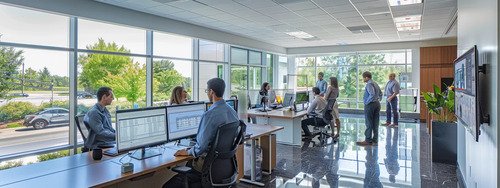In the competitive world of business, efficiency is paramount. Request for Proposal (RFP) software has emerged as a vital tool for companies looking to optimize their procurement processes and vendor management. By automating tedious tasks and centralizing crucial information, RFP software is revolutionizing how businesses approach vendor relationships. Keep reading to explore the various benefits of using the top request for proposal software to streamline your business operations.
Understanding Request for Proposal (RFP) Software and Its Role in Business
At its core, RFP software is designed to facilitate the process of requesting and receiving proposals from vendors. Traditionally, this involved a plethora of spreadsheets, emails, and documents, creating a breeding ground for errors and miscommunications. RFP software transforms this fragmented system into a coherent workflow, enabling businesses to create, distribute, and evaluate proposals with unprecedented ease.
The role of RFP software extends beyond mere organization; it provides a platform for comprehensive vendor evaluation. With built-in scoring systems, businesses can objectively assess the merits of each proposal. This ensures that decision-making isn’t clouded by ambiguity or bias, with the most suitable vendors clearly standing out.
Streamlining the Vendor Selection Process With RFP Software
The vendor selection process is a critical aspect of procurement, directly influencing project success. By employing RFP software, companies can ensure a more seamless and transparent selection process. The software’s ability to centralize all vendor communication and submissions in a single platform greatly reduces the risk of oversight or information loss.
With functionality that enables comparison of proposals side by side, RFP software drastically simplifies identifying the most competitive bids. Companies can set criteria based on price, quality, delivery time, or other critical factors, making it easier to perform an apples-to-apples comparison across a range of offerings.
Enhancing Collaboration and Communication Among Stakeholders
Collaboration is essential when managing proposals and vendor relationships. RFP software acts as a centralized hub for all communications, preventing valuable information from slipping through cracks often found in email chains or disconnected files. This shared environment empowers stakeholders to work together effectively, with full visibility over the RFP process.
RFP software also democratizes the decision-making process by allowing various team members to weigh in on vendor proposals. It can facilitate consensus-building, with features that enable the gathering and consideration of feedback from multiple departments or perspectives. This collaborative approach leads to more rounded and informed decisions.
Contributing To Data-Driven Decision Making
Access to accurate data is crucial for informed decision-making, and RFP software proves indispensable in this realm. It aggregates all RFP-related data, offering insightful analytics to guide strategic choices. Companies can track metrics such as vendor performance, proposal quality, and timelines to enhance future RFP endeavors.
With advanced reporting features, organizations can spot trends and patterns that might go unnoticed in a manual system. These insights can reveal areas of improvement or opportunities for cost savings. Moreover, data visualization tools included in RFP software can transform complex data sets into understandable, actionable reports.
Saving Time and Resources Through Automated RFP Management Techniques
Time and resources are among the most precious commodities for any business. Automation is a transformative feature of RFP software that allows companies to reclaim both. Routine tasks, such as distributing RFPs to vendors and collecting submissions, are automated, freeing staff to focus on more value-added activities.
Resource allocation also improves with using RFP software. Since the need for manual intervention is lessened, the workforce can be utilized more effectively elsewhere. This optimization of human resources increases productivity and boosts employee morale by eliminating monotonous and low-impact tasks.
Another often overlooked aspect is the reduction in paper usage. By moving to a digital RFP process, companies contribute to environmental sustainability while also cutting down on the costs associated with printing, storing, and disposing of paper documents.
Altogether, RFP software is a potent tool that streamlines the procurement process and fosters smarter, data-informed decision-making. Overall, the adoption of such software is akin to steering a ship with a precise, well-calibrated compass, ensuring that businesses navigate the complex seas of vendor management with confidence and efficiency.


